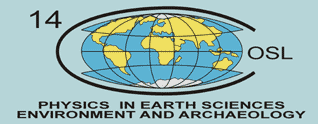

  |
GLIWICE RADIOCARBON LABORATORYLiquid Scintillation Counting MethodLiquid scintillation beta spectrometry is widely used in the radiocarbon and tritium laboratories in the world. The popularity of these method is so hight because there are commercially available liquid scintillation spectrometers.
Carbonized samples are caked with metallic lithium at the temperature of 800 and than 850oC and form lithium carbide (Li2C2).. This process goes in the vacuum conditions.
Lithium carbide undergoes hydrolysis, which produces acetylene (C2H2). Produced acetylene is purified by running through chromium mixture and dried using dry ice/ethanol water traps.
Pure and water free acetylene is then converted to the benzene through the trimerization which takes place with a help of vanadium catalyst. Produced benzene is then kept for about 30 days to allow eventual contaminating carbon to decay.
Sample benzenes are prepared for the measurements by putting them in special counting vials (low potassium dispensable glass vials or ultra low background PTFE (Teflon) vials. The scintillation coctails are prepared by adding in the appropriate amount Butyl-PBD in to the sample benzene. When carbon 14 nucleus is decaying, the beta particle is emitted. The beta particle losses its energy in the scintillation coctail. The kinetic energy of the beta particle is in the scintillation phenomena converted to the light. Produced light may be then measured by spectrometer photomultipiers. Determination of C-14 concentration/age requires analysis of energy spectrum for sample, background and standard sample.
Gliwice Radiocarbon Laboratory uses three counting geometries for determination of C-14 activity by means of liquid scintillation beta spectrometry:
0.8 ml of C6H6, which requires about 0.7 g of pure carbon in the sample, 2 ml of C6H6, which requires about 1.8 g of pure carbon in the sample, 3 ml of C6H6, which requires about 2.5 g of pure carbon in the sample.
Detailed description of dating precission of LSC method used in the Gliwice Radiocarbon Laboratory was described by Pazdur et al. 2003. |